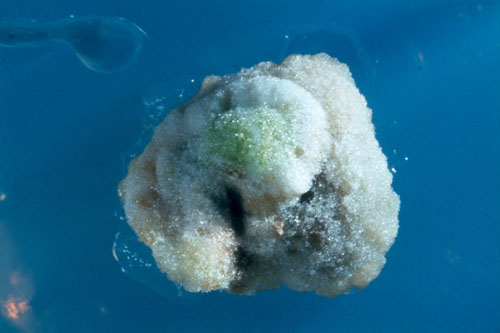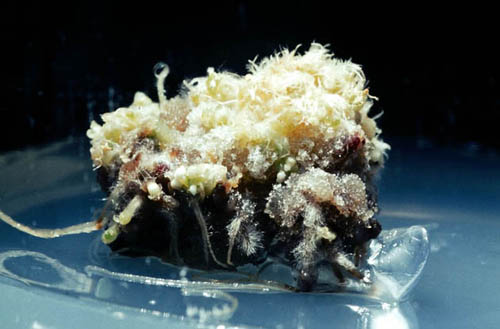Microbiology and natural genetics
The project studies the possibilities of using the universal DNA code for creating plant forms and spaces. The aim is to breed biological membranes and bubbles on an architectural scale as autotrophic organisms that will biochemically obtain energy from sunlight.
The project involves the studies of plant physiology of growth and developmental anomalies.
There are recorded examples of natural genetic techniques used by microbes to disturb the natural rules of development and to cause morphological anomalies and deformations.
In the normal plant development process, the force of gravity activates the creation of a vertical axis. The lower end of this axis is the section from which the root of the plant later grows, whereas the shoot grows from the top end. This polar differentiation is decisive to the vertical posture of plants. The upsetting of this order and uncontrolled cell growth may be caused by the hormonal and genetic interference of microbes, i.e. bacteria, viruses and fungi. In such a case the undefined cells become independent from the impact of gravity. They stop respecting the linear polarisation and grow without inner control, producing three-dimensional amorphous clusters: excrescences and calluses.
The project investigates the potential for biologic anomalies in conditions when a common external stimulus, i.e. the force of gravity, and the immanent growth principles, i.e. correlation and cell diversity, cease to play a role.
Providing uncontrolled processes with a spatial structure would enable the development of new plant forms.

In vitro-regeneration of plantlets on agar medium.
Photo courtesy by Maret Linda Kalda, Max-Planck-Institute for Plant Breeding Research, Cologne

Uncontrolled Biological Growth.
Tumour on a plane tree.
A formation of proliferating, unorganized and uncontrolled cells.
